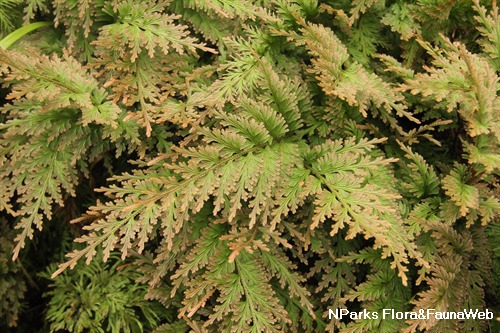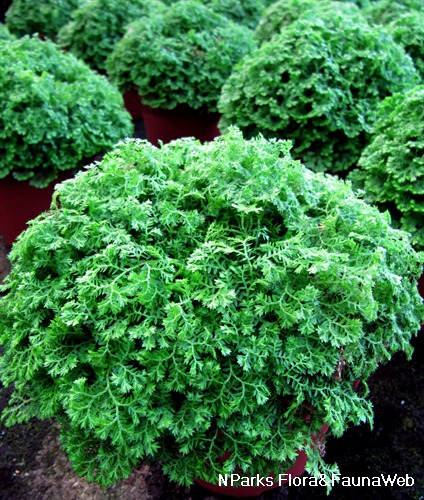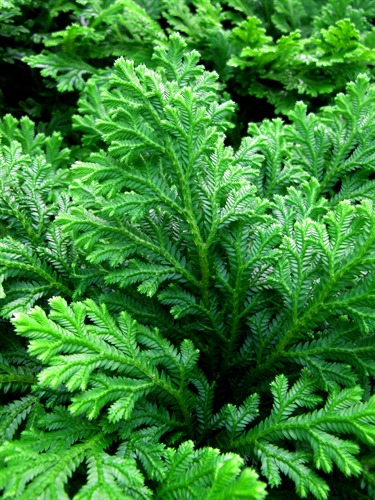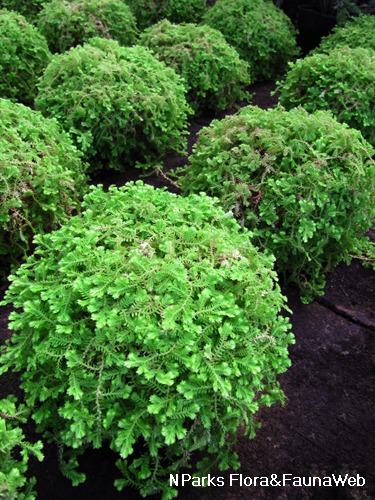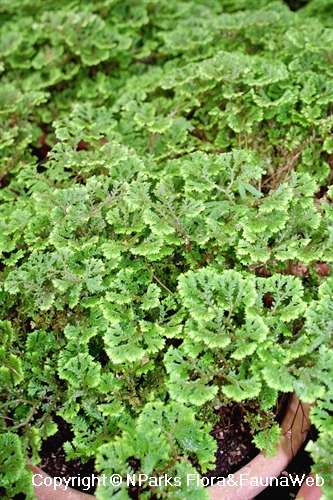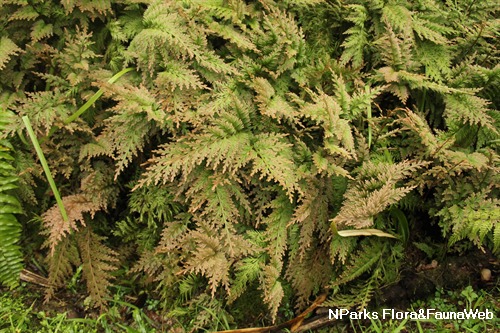
Back
Selaginella tamariscina (P.Beauv.) Spring
| Family Name: | Selaginellaceae |
| Synonyms: | Stachygynandrum tamariscinum P.Beauv. |
Name
Classifications and Characteristics
| Plant Division | Ferns & Lycophytes (Non-Seed Vascular Plants) (Clubmoss & Spikemoss) |
|---|---|
| Plant Growth Form | Herbaceous Plant |
| Mode of Nutrition | Autotrophic |
Biogeography
| Native Distribution | China, India, Laos, Philippines, Malaysia, Myanmar, Indonesia, Thailand, Nepal and Sri Lanka |
|---|---|
| Native Habitat | Terrestrial |
| Preferred Climate Zone | Tropical |
| Local Conservation Status | Non-native |
Description and Ethnobotany
| Growth Form | Growth form is described as a rhizophore, which is a distinct feature of Selaginella species, erect plant measuring about 15 - 35 cm tall. Rhizophores are usually restricted to creeping rhizomes and stolons. |
|---|---|
| Foliage | Axillary leaves symmetrical, ovate to triangular, measuring about 1.1 - 1.6 by 0.4 - 1.1 mm. |
| Stems | Main stems branched from middle upward and pinnately branched, unbranched main stem about 5 - 25 cm tall. Leafy branches about 7 - 12 pairs, 2 or 3 times pinnately branched, secondary branches 1 or 2 pinnately branched, tertiary branches forked or once pinnately branched. |
| Reproductive Parts - non-flowering plant | Strobili solitary, terminal, compact, measuring about 5 - 15 by 1 - 1.4 mm. Sporophylls uniform, ovate to triangular and sharply carinate, microsporangia elliptic and thin, microspores are yellowish orange in colour, megaspores are whitish to brown in colour. |
| Etymology | Genus epithet Selaginella is derived from the Latin word selago, which means clubmoss. |
Landscaping Features
| Desirable Plant Features | Ornamental Foliage |
|---|---|
| Landscape Uses | Parks & Gardens, Small Gardens, Groundcover, Terrarium |
Fauna, Pollination and Dispersal
| Seed or Spore Dispersal | Abiotic |
|---|
Plant Care and Propagation
| Light Preference | Semi-Shade, Full Shade |
|---|---|
| Water Preference | Lots of Water, Moderate Water |
| Plant Growth Rate | Moderate |
| Rootzone Tolerance | Moist Soils, Fertile Loamy Soils |
| Propagation Method | Spore, Stem Cutting, Division |
Foliar
| Foliage Retention | Evergreen |
|---|---|
| Mature Foliage Colour(s) | Brown, Green |
| Foliar Attachment to Stem | Sessile |
Image Repository
Others
| Master ID | 32205 |
|---|---|
| Species ID | 6611 |
| Flora Disclaimer | The information in this website has been compiled from reliable sources, such as reference works on medicinal plants. It is not a substitute for medical advice or treatment and NParks does not purport to provide any medical advice. Readers should always consult his/her physician before using or consuming a plant for medicinal purposes. |

